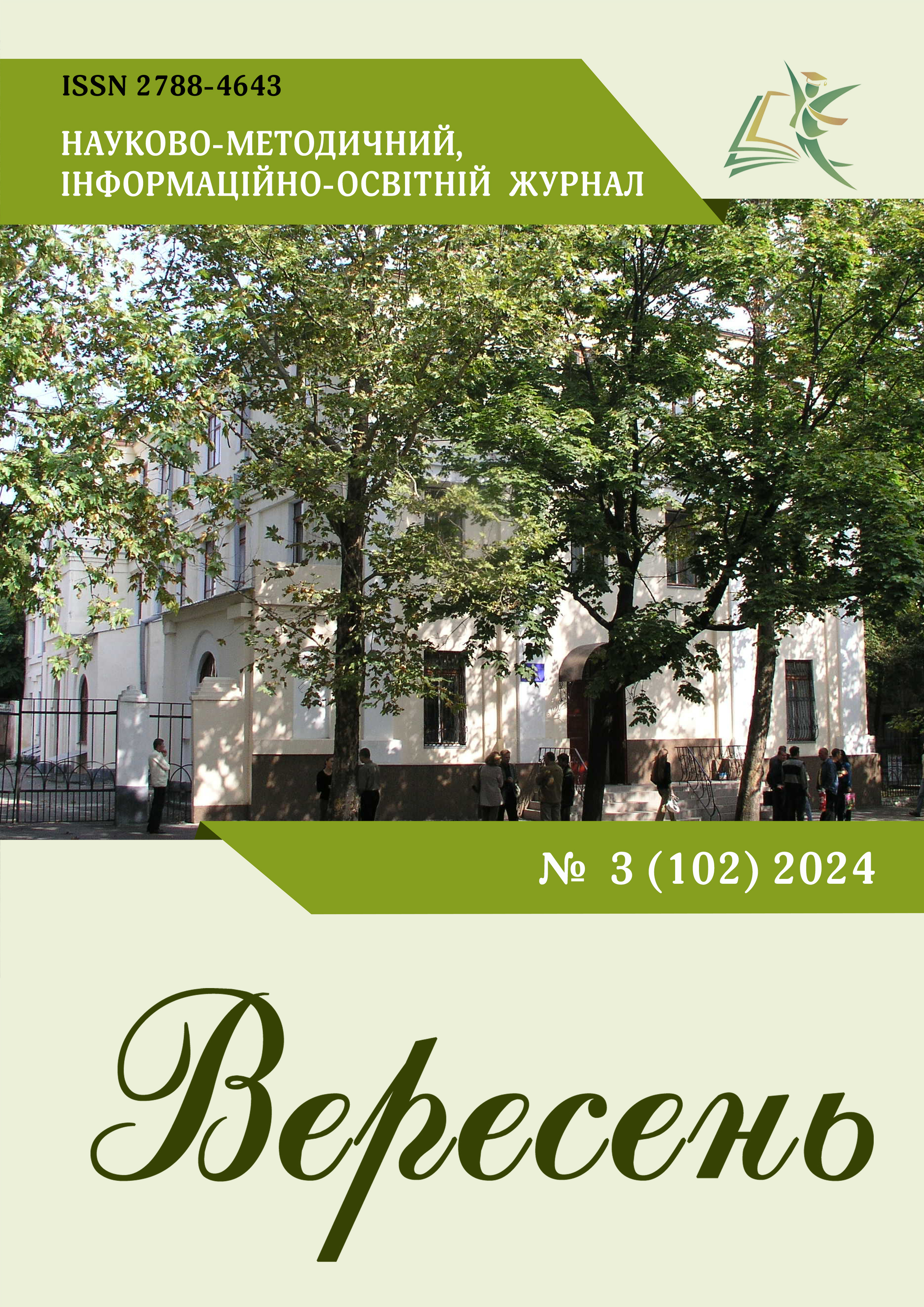USING THE GAP ANALYSIS METHOD FOR RESEARCH FUNCTIONING OF THE EDUCATIONAL INSTITUTION
DOI:
https://doi.org/10.54662/veresen.3.2024.02Keywords:
GAP analysis, planned indicators, strategic gap, strategic indicators, strategic planningAbstract
The concept and method of implementing the GAP analysis approach are considered in the scientific and methodological article. The content of the analytical activity regarding the identification of inconsistencies in the indicators of the organization’s development with the set goals is determined. The use of analytical tools in strategic analysis is described by the authors. The concept and essence of the concept of «strategic gap» are defined. General recommendations on the technology of using GAP analysis to identify discrepancies between strategic goals and market opportunities of the enterprise are outlined. The specifics of the activity and development of educational institutions are indicated. The place of strategic analysis of its activity is clarified. The possibility of using strategic tools, in particular, GAP analysis, to improve the management of an educational organization is characterized. The types of strategic gaps in the educational institution are determined. The stages of application of GAP analysis in the planning process are analyzed. An adapted version of the GAP-analysis method of the activity of educational institutions is presented. Factors affecting the specifics of their activity have been determined. A graphic representation of the adapted methodology for the analysis of the development of the educational institution was built in order to visually present the existing gaps between the desired and the current state. The method of calculating the integral indicator for conducting GAP analysis and constructing a schedule for calculating the integral gap indicators according to the parameters of the development of the educational institution is explained. The procedure for calculating parameters and deviations (strategic gaps) is described. For the first time, the article offers recommendations for determining directions and ways to overcome discrepancies between the need for the development of educational institutions and the available indicators of research results.
References
Balan, V. & Tymchenko, I. (2016). Formuvannia stratehii rozvytku pidpryiemstva na osnovi dynamichnoho SPACE-analizu [Formation of enterprise development strategy based on dynamic SPACE analysis]. Skhid, 4, 5–16. DOI: https://doi.org/10.21847/1728-9343.2016.4(144).77982 (ukr).
Dovhan, L. Ye. & Norenko, V. S. (2017). Upravlinnia stratehichnymy mozhlyvostiamy pidpryiemstva [Management of strategic opportunities of the enterprise]. Suchasni pidkhody do upravlinnia pidpryiemstvom, 2, 11–19 (ukr).
Fedosova, A. O. (2019). Osoblyvosti rozrobky stratehii zakladu osvity yak umova yoho stanovlennia v suchasnykh umovakh [Peculiarities of developing the strategy of an educational institution as a condition for its formation in modern conditions]. Veresen, 3–4 (82–83), 53–58 (ukr).
Ihnatieva, I. A., Havrylenko, T. V. & Serbenivska, A. Yu. (2021). Stratehichne upravlinnia v systemi suchasnoho menedzhmentu [Strategic management in the system of modern management]. Menedzhment (Eds. K. V. Pichyk, V. V. Khrapkina). Tema 9, 214–272. Kyiv: Kyievo-Mohylianska akademiia (ukr).
Kasich, A. O. (2014). Vtilennia kontseptsii stratehichnoho upravlinnia v praktyku vitchyznianykh pidpryiemstv [Implementation of the concept of strategic management in the practice of domestic enterprises]. Biznes Inform, 11, 290–294 (ukr).
Krainiuchenko, O. F. & Petrovych, M. V. (2020). Gap-analiz yak efektyvnyi instrument dlia otsiniuvannia stratehichnykh rozryviv: sutnist ta metodolohiia [Gap analysis as an effective tool for assessing strategic gaps: essence and methodology]. Naukovyi visnyk Mizhnarodnoho humanitarnoho universytetu, 42, 61–65. DOI: https://doi.org/10.32841/2413-2675/2020-42-11 (ukr).
Lokhman, N. V. (2017). GAP – analiz dosiahnennia tsilei orhanizatsiinoi diialnosti pidpryiemstva [GAP – analysis of achieving the goals of organizational activity of the enterprise]. Development strategy of science and education, 1 (1), 106–109 (ukr).
Shehda, A. V. (2012). Stratehichnyi aspekt upravlinnia rozvytkom subiektiv hospodariuvannia [Strategic aspect of managing the development of economic entities]. Teoretychni ta prykladni pytannia ekonomiky, 27 (3), 21–30 (ukr).
Shershnova, Z. Ye. (2017). Kompleksni stratehii u stratehichnomu rozvytku intehrovanykh korporatyvnykh struktur [Complex strategies in the strategic development of integrated corporate structures]. Visnyk Khmelnytskoho natsionalnoho universytetu, 2, tom 2, 99–103 (ukr).
Sytnytskyi, M. V. & Rozbeiko, K. V. (2020). Rozrobka metodychnoho pidkhodu do vizualizatsii rezultativ gap-analizu stratehichnoho upravlinnia IT pidpryiemstv [Development of a methodical approach to visualization of gap-analysis results of strategic management of IT enterprises]. Efektyvna ekonomika, 5. DOI: https://doi.org/10.32702/2307-2105-2020.5.10 (ukr).
Tertychka, V. V. (2017). Stratehichne upravlinnia [Strategic management]. Kyiv: «K.I.S.». Retrieved from: http://surl.li/pylgy (ukr).
Tomchuk O. F. & Hradomska I. O. (2020). Vykorystannia metodiv stratehichnoho upravlinskoho analizu pid chas pryiniattia upravlinskykh rishen [Use of strategic management analysis methods during management decision-making]. Bukhhalterskyi oblik, analiz ta audyt, 41, 307–312. DOI: https://doi.org/10.32843/infrastruct41-50 (ukr).
Voronkova, A. A. & Ostakhov, D. (2023). Faktory zovnishnoho seredovyshcha, yaki vplyvaiut na stratehiiu rozvytku pidpryiemstva [Factors of the external environment that affect the strategy of the development of the enterprise]. Upravlinnia rozvytkom sotsialno-ekonomichnykh system. Kharkiv: DBTu, 97–100 (ukr).




